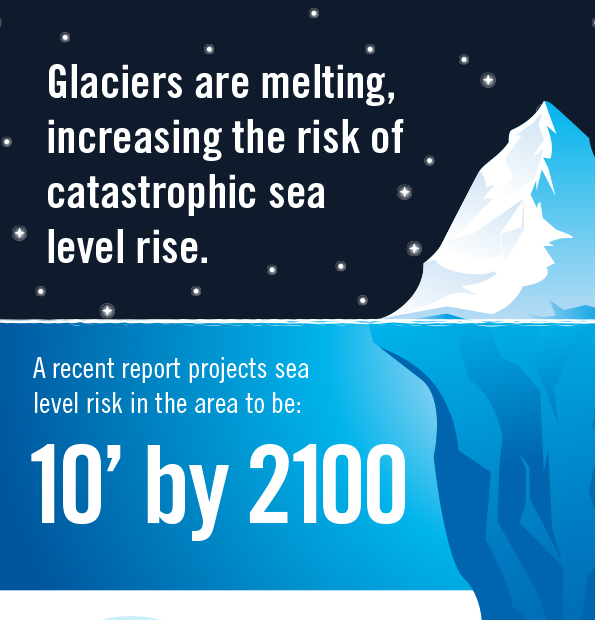Several California cities are suing American energy companies over the impacts of climate change. But the law firm representing those cities is promoting its work by mischaracterizing a landmark report on sea level rise – a report that the cities also cite as evidence in their lawsuits.
Hagens Berman Sobol Shapiro LLP has been retained by the cities of Oakland and San Francisco in their lawsuits seeking billions of dollars in damages from oil and natural gas companies due to the risks from global warming. Hagens Berman partner Matthew Pawa, who in 2012 helped activists devise the current litigation strategy to attack energy companies in the courts over climate change, is one of the lead attorneys on the cases.

Excerpt of Hagens Berman climate litigation infographic advertisement. Source: Hagens Berman Sobol Shapiro LLP
On its website, Hagens Berman maintains an information hub about the lawsuits, including the energy companies who are targeted. According to Hagens Berman, the attorneys “seek an order requiring defendants to abate the global warming-induced sea level rise by funding an abatement program to build sea walls and other infrastructure.” The hub includes an infographic that claims sea levels will rise 10 feet by 2100.
But the research underpinning that claim only included it as an extreme scenario that does not track with current trends or even the most likely changes in sea level.
Hagens Berman pulled the finding from a recent report entitled “Rising Seas in California,” which was requested by a number of California state government offices. The report examined several sea level rise scenarios for three California cities: Crescent City, San Francisco, and La Jolla. By 2100, the “likely range” of sea level rise had an upper end estimate of about 3.5 feet – and even that scenario assumed zero climate mitigation efforts around the world.
But the researchers also included an “extreme sea-level rise scenario,” the so-called “H++” scenario. The report noted that it is “scientifically premature to estimate the probability that the H++ scenario will come to pass, and if so, when the world will move onto the H++ trajectory.” The H++ scenario is what shows a sea level rise of 10 feet by 2100.
The authors observed that “sea-level rise is not following the H++ scenario at this moment,” although they could not rule it out as an “extreme” possibility in the latter half of the century.
In their official complaints, as listed on the Hagens Berman website, the cities of Oakland and San Francisco both reference “Rising Seas in California” in declaring that “sea level is likely to rise faster than projected and could reach as much as a catastrophic ten feet by the end of the century.” The Daily Caller first reported on the discrepancy between the municipal complaints and the researchers’ findings.
Pattern of Misrepresentation
The use of unlikely sea level projections adds to a growing list of problems for the plaintiffs, who have been caught several times misrepresenting evidence and misleading the public.
Last month, an Energy In Depth review of the Oakland and San Francisco complaints showed how the plaintiffs had mischaracterized a presentation from 1996 to suggest the industry had suppressed climate science. The presentation from the Global Climate Coalition (GCC) in 1996 was merely a summary of what the U.N. Intergovernmental Panel on Climate Change concluded in 1995. The complaints dubiously described the presentation as “internal” industry research.
The claim was so egregious that a federal judge, citing the discrepancy between the complaints and the GCC presentation, recently dismissed the allegation that energy companies had suppressed climate science, undermining a core argument of the litigants and many climate activists. The judge’s decision shows how “ill-prepared” climate activists are in their campaign, especially when it comes under scrutiny from “an informed and inquisitive judge,” according to a recent column in the Wall Street Journal.
The various California municipalities involved in climate litigation have also made divergent claims about climate change in their lawsuits and their disclosures to potential investors. The municipalities have cited risks and potential damages from sea level rise, wildfires, and other natural disasters, but they downplayed those same risks and damages in their bond offerings to investors. The discrepancy has raised serious questions about whether the cities may have committed securities fraud or filed their lawsuits in bad faith.